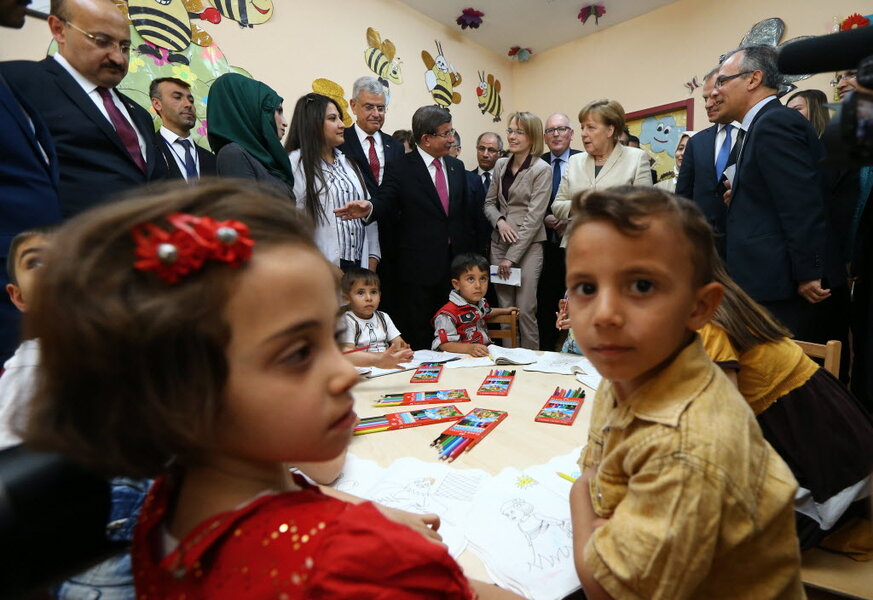A model to stem mass migration?
Loading...
The European Union was overrun last year with more than a million refugees. Most were desperate Syrians arriving in Greece on small boats from Turkey. Those days may be gone. In April, fewer than 20,000 people made the dangerous crossing, according to the United Nations. The reasons for this dramatic drop could provide a lesson for a world that must often cope with mass migrations.
The rapid decline in the flow of migrants was the result of a novel agreement between the EU and Turkey in March. Out of compassion for those in genuine need of asylum, the EU agreed to annually accept 72,000 of the people now living in Turkey’s refugee camps. In return – and for $6.8 billion – Turkey will take back those who entered the EU illegally and are not considered refugees.
This “one for one” arrangement, which has drawn some criticism, is a delicate mix of compassion and law enforcement. It recognizes Europe’s moral responsibilities for the effects of wars in the Middle East but insists on the responsibility of both Turkey and refugees to honor the sovereignty of EU borders. The plan, which was backed by German Chancellor Angela Merkel, has drawn praise from President Obama.
Along with NATO ships, Turkey’s Coast Guard is now helping stem the flow of “irregular” migrants and taking other steps. In addition, the EU is trying to relieve the burden on Greece by coming up with a plan to distribute refugees to most of its member states. The plan is controversial because EU states that refuse to resettle refugees will be charged a penalty. And the EU had to promise visa-free travel for Turks to most of the EU – but only as long as Turkey meets certain political goals by July.
The EU hopes for similar agreements with other countries, such as Nigeria, that are still major sources of migration across the Mediterranean Sea, mainly from Libya to Italy. Many of the Nigerian migrants are fleeing the conflict caused by the terrorist group Boko Haram.
With so much political rancor over immigration in many countries, the world needs a good model for managing migration flows.





